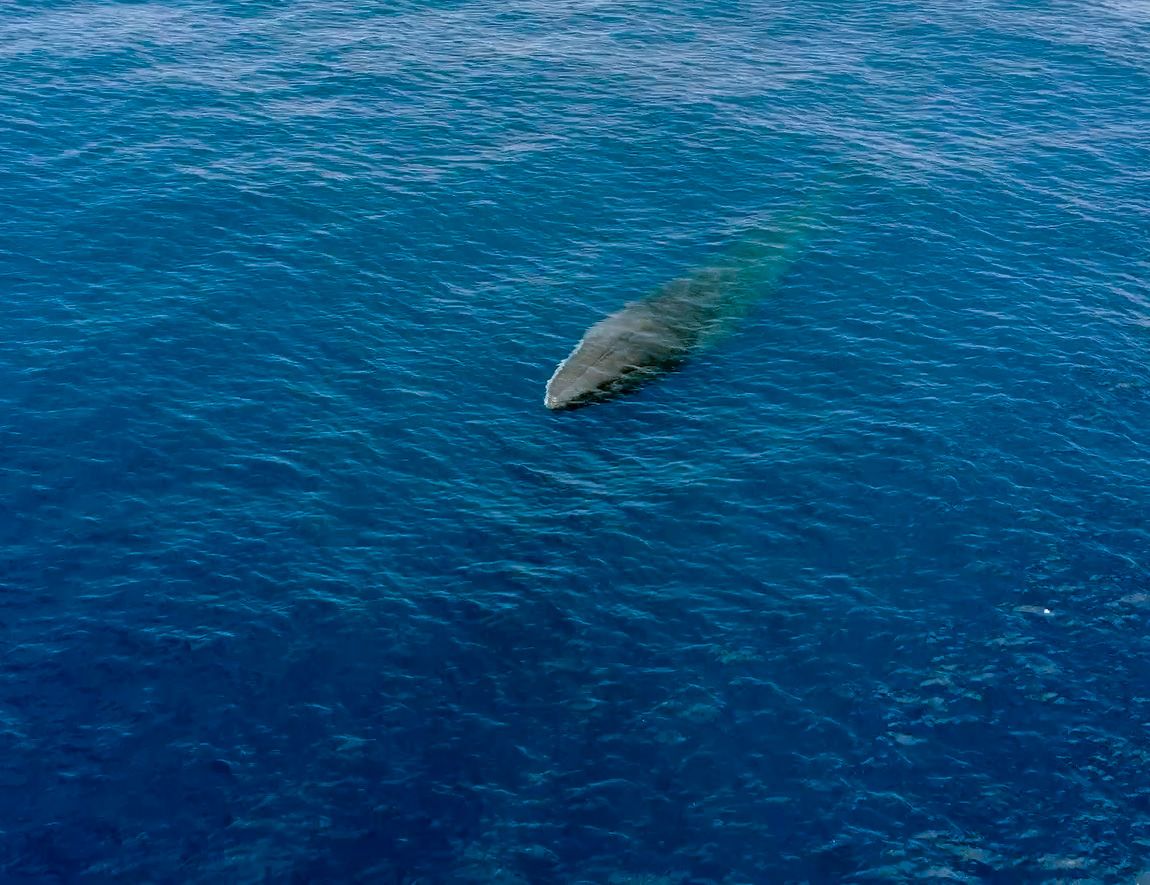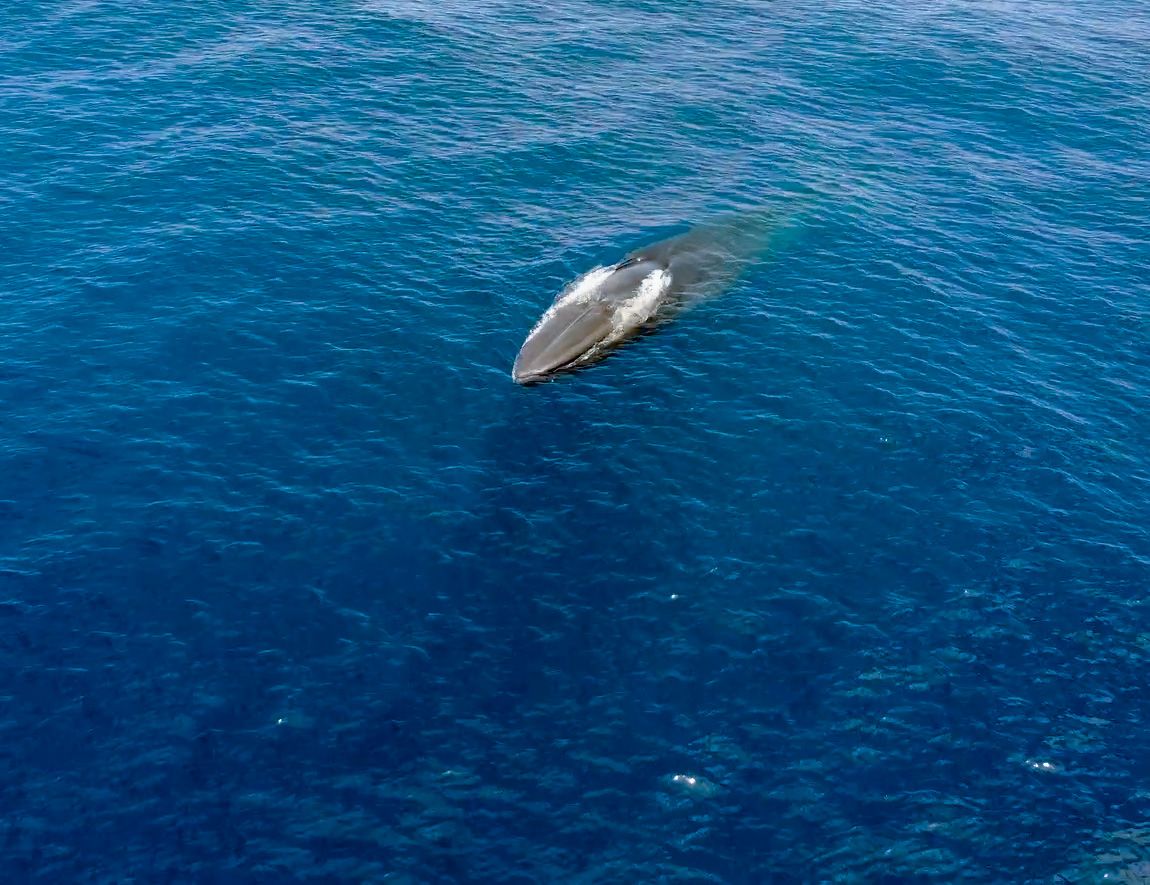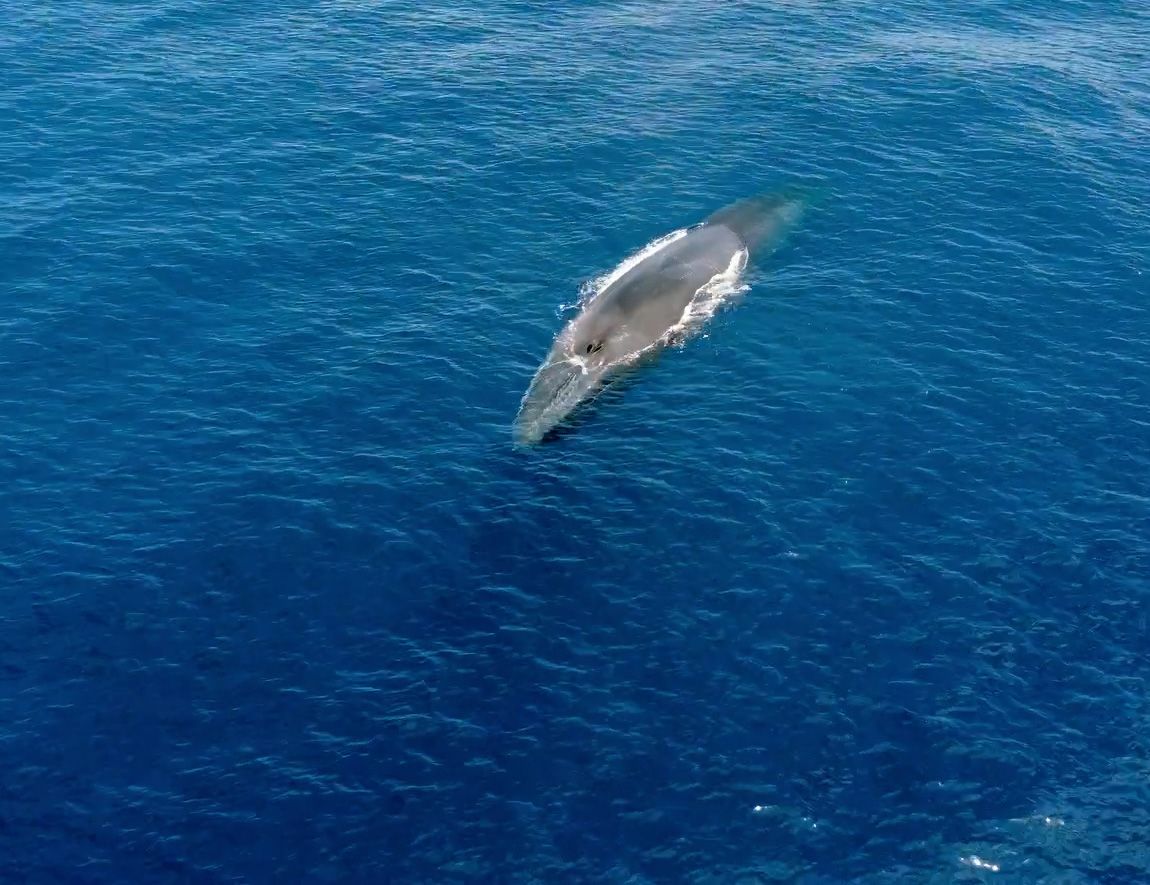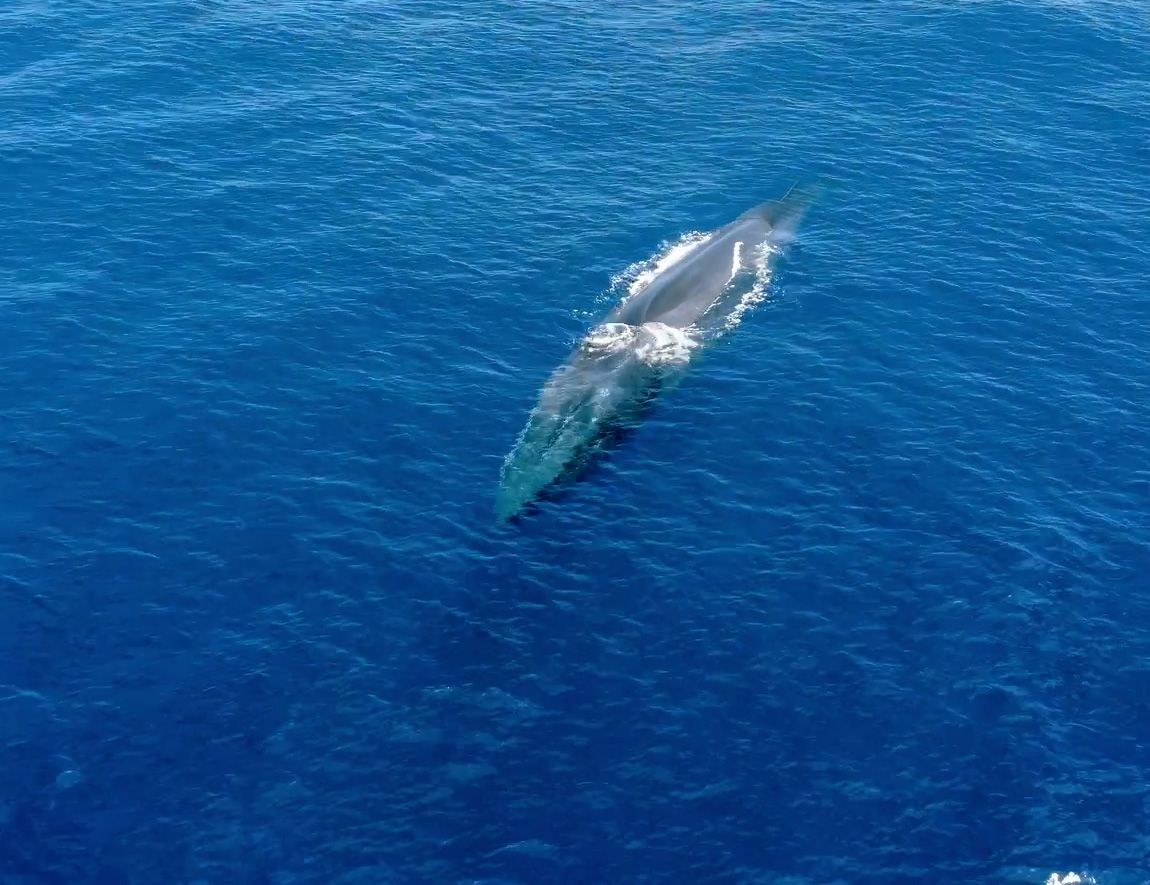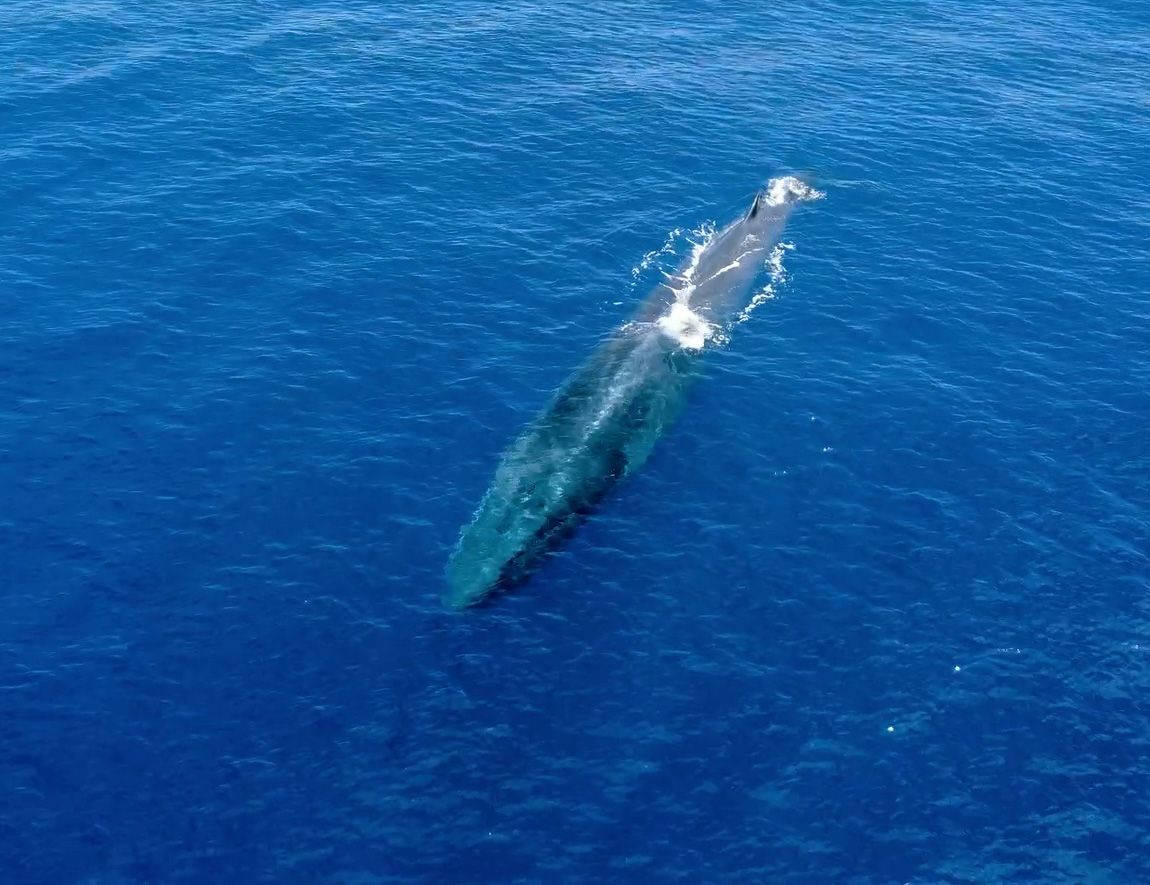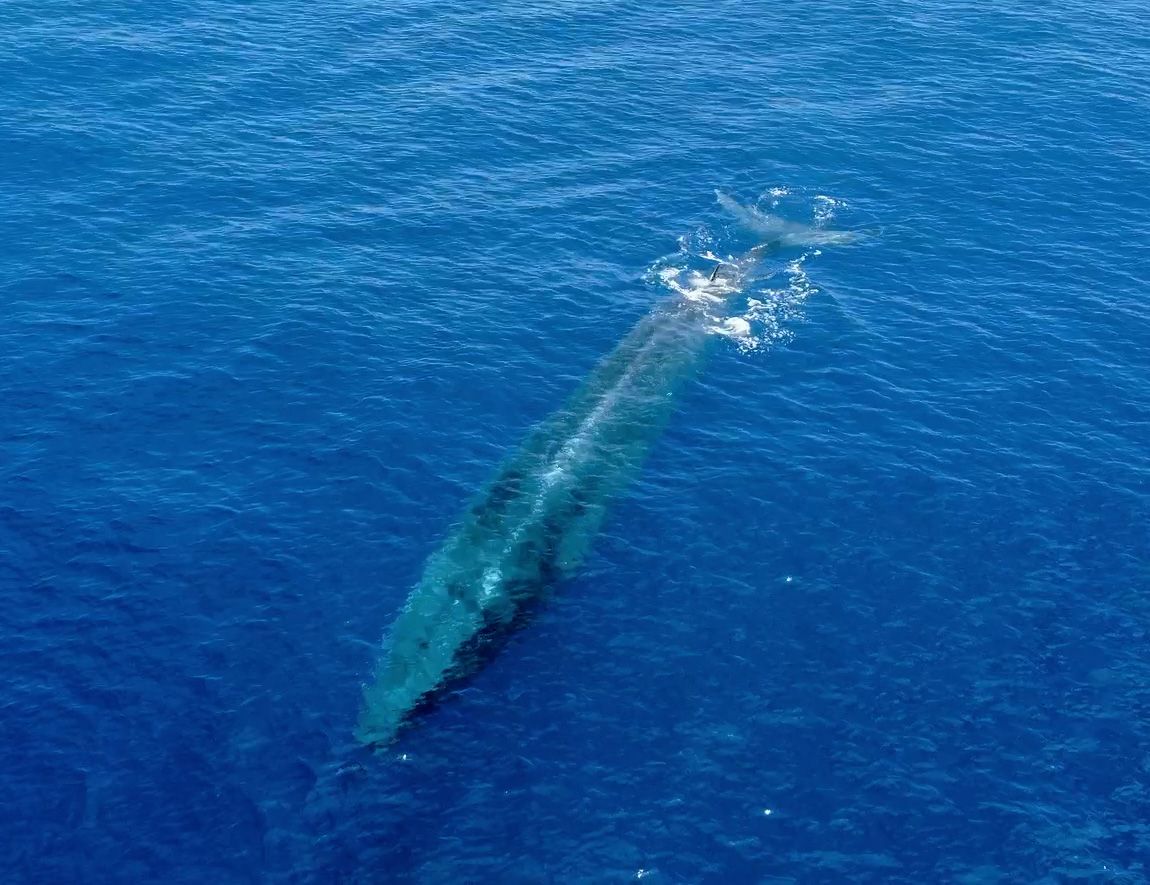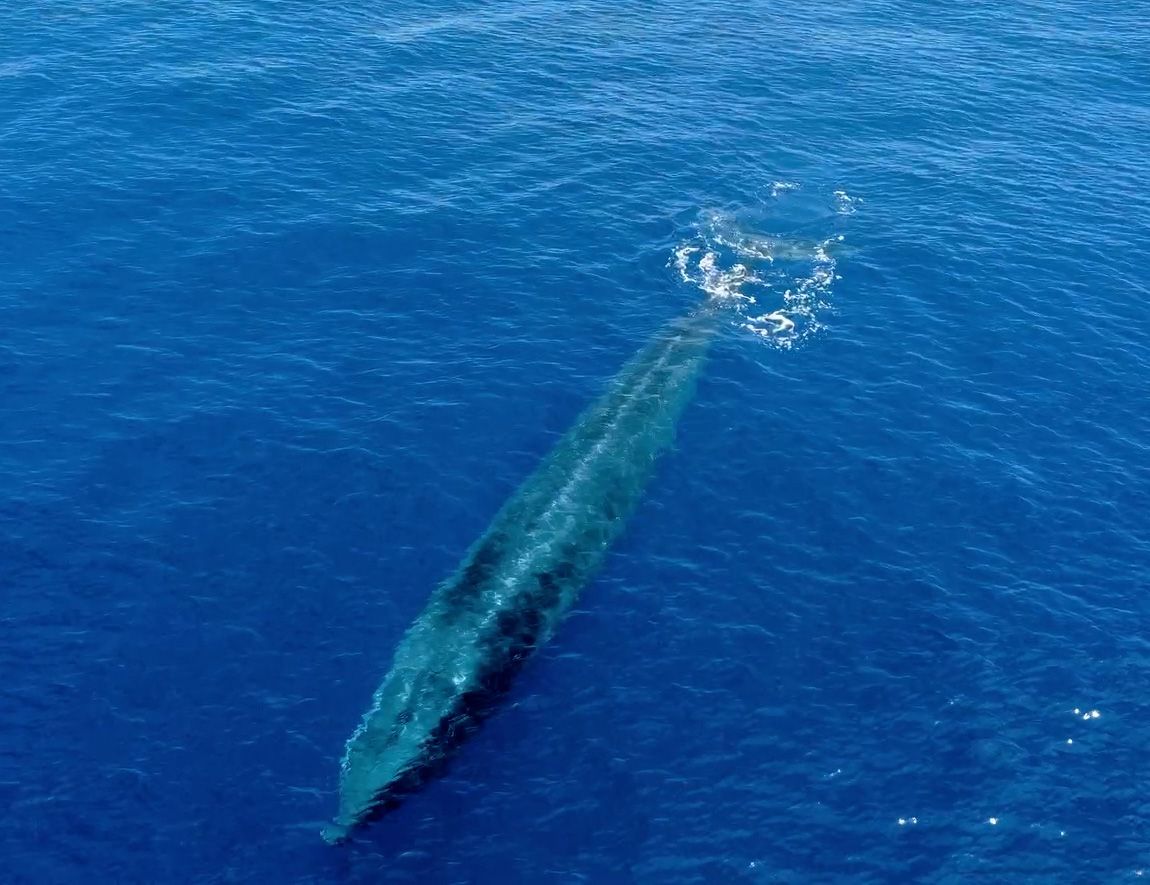After the last encounter with whales, nobody really felt like swimming anymore.
On Thursday, June 26, Statsraad Lehmkuhl was drifting about a week’s sail away from the next port, Ponta Delgada in the Azores.
– We are now far enough ahead of schedule to afford ourselves to let the wind catch up with us, instead of continuing to chase it. We have therefore been almost without any wind since yesterday afternoon, just barely managing steering speed under all the sail, wrote Captain Marc Seidl in his daily report.

Several Visits
Taking it easy turned out to be a smart move. A pod of whales appeared around the ship, and it was nice not to be busy pulling ropes and handling sails. Everyone on board had time to enjoy the sight.
– We have had several visits from Sei whales who have shown their interest and curiosity for us, Marc continued in his report.

Sei whales are large animals, 15-20 meters long and weighing up to 30 tons. They resemble Bryde’s whales and fin whales, but unlike those, the Sei whale does not lift its tail fluke out of the water when diving.
This was easy to observe from Statsraad Lehmkuhl, as you see on the photos of the pod taken both from the ship and with a drone.
Baleen Whales
Sei whales belong to the group of baleen whales and therefore don’t have teeth like dolphins and belugas. In the mouth, the Sei whale instead has about 700 baleen plates, which both look and function like the bristles of a brush.
With the baleen, they filter out krill, copepods, plankton, small fish, and squid. Over the course of a day, they can consume up to 900 kilos of food in this way.

Very Fast
Sei whales stay in small groups of three or four, and swim slowly at the surface with open mouths when hunting for food. But they are fast and can reach speeds of 27 knots if needed, faster than most other whale species.
There are Sei whales in nearly every ocean, exept in the far north and south. They don’t like areas close to ice, but thrive best in warm waters.
Food for Sharks
Only two days after the encounter with the Sei whales, the lookout once again rang the bell in the bow of Statsraad Lehmkuhl.

– Today two bells rang out for what was assumed to be a whale carcass on the port side. The course was changed to pass closer to confirm this - which we did - and two large sharks circled it. They had probably already eaten their share, and after taking a closer look at the ship, they and the whale disappeared in our wake, Marc wrote in his Captain's report.
Sharks prefer to catch their prey alive - none of them feed exclusively on carrion, but even a great white won’t say no if it comes across a dead whale.

Blubber
As the photos taken by Matteo Baratella show, it’s not easy to recognize that the white mound floating in the ocean was once a whale. The white mass is blubber, the thick layer of fat that both keeps whales warm and serves as an “emergency ration.” But Marc has seen dead whales before.
– That was the big happening of the day so far, and a swim stop is not in high demand anymore, he finishes his report, presumably with a smile.


